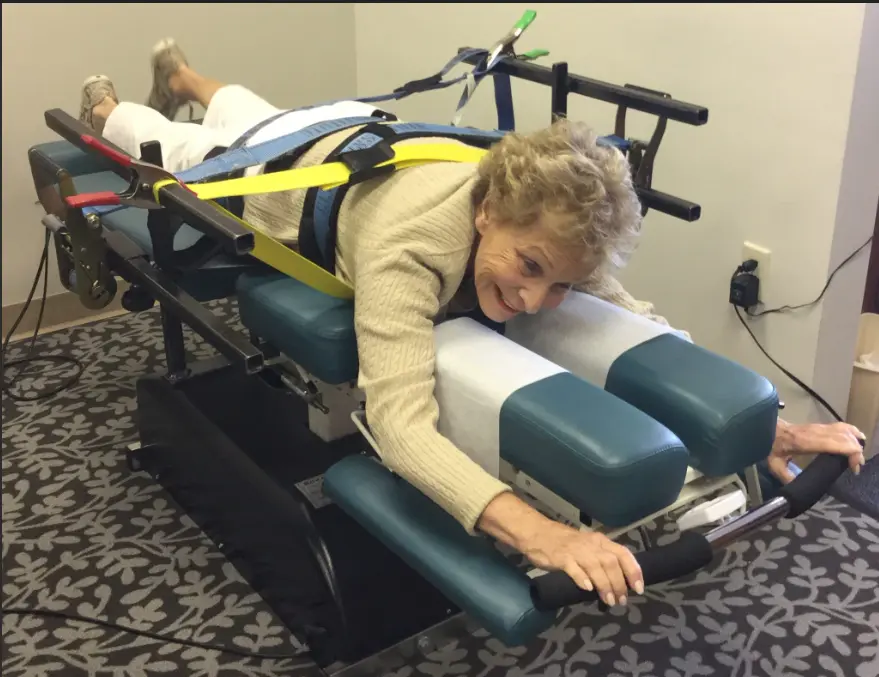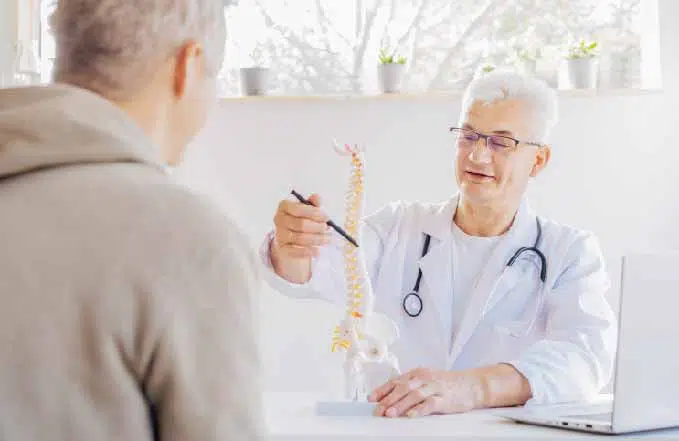Scoliosis is a condition characterized by an abnormal curvature of the spine. While it is commonly associated with adolescents, scoliosis can also affect adults, including those over the age of 80. Managing scoliosis in elderly adults presents unique challenges due to age-related factors and potential comorbidities. This article provides a comprehensive overview of scoliosis in adults over 80, including its understanding, prevalence, diagnosis challenges, impact on daily life, treatment options, rehabilitation, pain management, and psychological impact.
Understanding Scoliosis in Elderly Adults
Scoliosis in elderly adults refers to the development or progression of spinal curvature beyond the age of 80. The exact cause of scoliosis in this age group is often unknown, but it can be related to degenerative changes in the spine, osteoporosis, or the progression of a pre-existing curvature. Understanding the underlying mechanisms and contributing factors is crucial for effective management.

Prevalence and Risk Factors
The prevalence of scoliosis in adults over 80 is not well-documented, but studies suggest that it may be higher than previously thought. One study found that 68% of elderly individuals had some degree of scoliosis, with 22% having a curvature greater than 10 degrees. Risk factors for developing scoliosis in this age group include a history of scoliosis in adolescence, osteoporosis, and certain medical conditions such as Parkinson’s disease or arthritis.
Challenges in Diagnosing Scoliosis in Adults Over 80
Diagnosing scoliosis in elderly adults can be challenging due to several factors. Firstly, the symptoms of scoliosis may be masked by other age-related conditions, making it difficult to identify. Additionally, the curvature may progress slowly over time, leading to a delayed diagnosis. Furthermore, elderly adults may have limited mobility or cognitive impairments, making it harder to perform accurate physical examinations or obtain reliable medical histories.

Impact of Scoliosis on Daily Life and Functioning
Scoliosis can have a significant impact on the daily life and functioning of elderly adults. The abnormal curvature of the spine can cause pain, difficulty in maintaining balance, and reduced mobility. This can lead to limitations in activities of daily living, such as walking, dressing, and performing household tasks. The psychological impact of scoliosis, including body image concerns and decreased self-esteem, should not be overlooked.
Non-Surgical Treatment Options for Managing Scoliosis in Elderly Adults
Non-surgical treatment options for scoliosis in elderly adults aim to alleviate pain, improve mobility, and prevent further progression of the curvature. These options may include physical therapy, bracing, pain management techniques, and exercise programs tailored to the individual’s needs. Physical therapy can help strengthen the muscles supporting the spine and improve flexibility, while bracing may be used to provide support and reduce pain.
Surgical Treatment Options for Scoliosis in Elderly Adults
Surgical intervention may be considered for elderly adults with severe scoliosis or those experiencing significant pain and functional limitations. The goal of surgery is to correct the curvature and stabilize the spine. However, surgical treatment in this age group carries additional risks due to age-related factors, such as decreased bone density and potential complications associated with anesthesia. Therefore, careful consideration and thorough evaluation are necessary before opting for surgery.
Considerations for Surgical Intervention in Elderly Adults
When considering surgical intervention for scoliosis in elderly adults, several factors need to be taken into account. These include the patient’s overall health, functional status, and life expectancy. The potential benefits of surgery, such as pain relief and improved quality of life, should be weighed against the risks and potential complications. Shared decision-making between the patient, their family, and the healthcare team is crucial in determining the most appropriate course of action.

Rehabilitation and Physical Therapy for Scoliosis in Elderly Adults
Rehabilitation and physical therapy play a vital role in the management of scoliosis in elderly adults, regardless of whether they undergo surgical or non-surgical treatment. Physical therapy can help improve strength, flexibility, and balance, which can enhance functional abilities and reduce pain. Rehabilitation programs should be tailored to the individual’s specific needs and may include exercises, stretches, and postural training.
Pain Management Strategies for Scoliosis in Elderly Adults
Pain management is an essential aspect of scoliosis treatment in elderly adults. Non-pharmacological approaches, such as heat or cold therapy, massage, and transcutaneous electrical nerve stimulation (TENS), can provide relief. Pharmacological options, including nonsteroidal anti-inflammatory drugs (NSAIDs) or analgesics, may also be prescribed. However, caution should be exercised when using medications in this age group due to potential side effects and interactions with other medications.
Psychological and Emotional Impact of Scoliosis in Elderly Adults
Scoliosis can have a significant psychological and emotional impact on elderly adults. Body image concerns, self-consciousness, and decreased self-esteem are common. It is essential to address these psychological aspects and provide support through counseling or support groups. Encouraging social engagement and maintaining a positive outlook can also help improve the overall well-being of elderly adults with scoliosis.
Conclusion and Future Directions
Managing scoliosis in adults over 80 presents unique challenges due to age-related factors and potential comorbidities. Early diagnosis, appropriate treatment options, and comprehensive rehabilitation programs are crucial for optimizing outcomes. Further research is needed to better understand the prevalence, risk factors, and long-term effects of scoliosis in this age group. Additionally, the development of innovative treatment approaches and advancements in surgical techniques may further improve the management of scoliosis in elderly adults. By addressing the physical, psychological, and emotional aspects of scoliosis, healthcare professionals can provide comprehensive care and enhance the quality of life for elderly adults living with this condition.
References:
- Richards, B. S., Bernstein, R. M., D’Amato, C. L., & Thompson, G. H. (2005). “Standardization of criteria for adolescent idiopathic scoliosis brace studies: SRS Committee on Bracing and Nonoperative Management.” Spine (Phila Pa 1976), 30(18), 2068-2075.
- Weinstein, S. L., Dolan, L. A., Wright, J. G., & Dobbs, M. B. (2013). “Effects of untreated idiopathic scoliosis: a 50-year natural history study.” Spine (Phila Pa 1976), 38(9), E502-E510.
- Asher, M. A., & Burton, D. C. (2006). “Adolescent idiopathic scoliosis: natural history and long-term treatment effects.” Scoliosis, 1(1), 2.
- Negrini, S., Donzelli, S., Aulisa, A. G., et al. (2018). “2016 SOSORT guidelines: Orthopaedic and Rehabilitation treatment of idiopathic scoliosis during growth.” Scoliosis and Spinal Disorders, 13(1), 3.
- Hresko, M. T. (2013). “Idiopathic scoliosis in adolescents.” The New England Journal of Medicine, 368(9), 834-841.
- Weinstein, S. L., Dolan, L. A., Cheng, J. C., et al. (2008). “Adolescent idiopathic scoliosis.” The Lancet, 371(9623), 1527-1537.
- Konieczny, M. R., Senyurt, H., & Krauspe, R. (2013). “Epidemiology of adolescent idiopathic scoliosis.” Journal of Children’s Orthopaedics, 7(1), 3-9.
- Lonstein, J. E., & Carlson, J. M. (1984). “The prediction of curve progression in untreated idiopathic scoliosis during growth.” The Journal of Bone and Joint Surgery, 66(7), 1061-1071.
- Aulisa, A. G., Guzzanti, V., Falciglia, F., et al. (2014). “Brace treatment in juvenile idiopathic scoliosis: a prospective study.” Scoliosis, 9(1), 3.
- Parent, S., Newton, P. O., & Wenger, D. R. (2005). “Adolescent idiopathic scoliosis: Etiology, anatomy, natural history, and bracing.” Instructional Course Lectures, 54, 529-536.
- Weinstein, S. L., & Ponseti, I. V. (1983). “Curve progression in idiopathic scoliosis.” The Journal of Bone and Joint Surgery, 65(4), 447-455.
